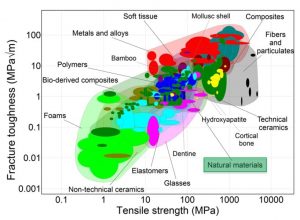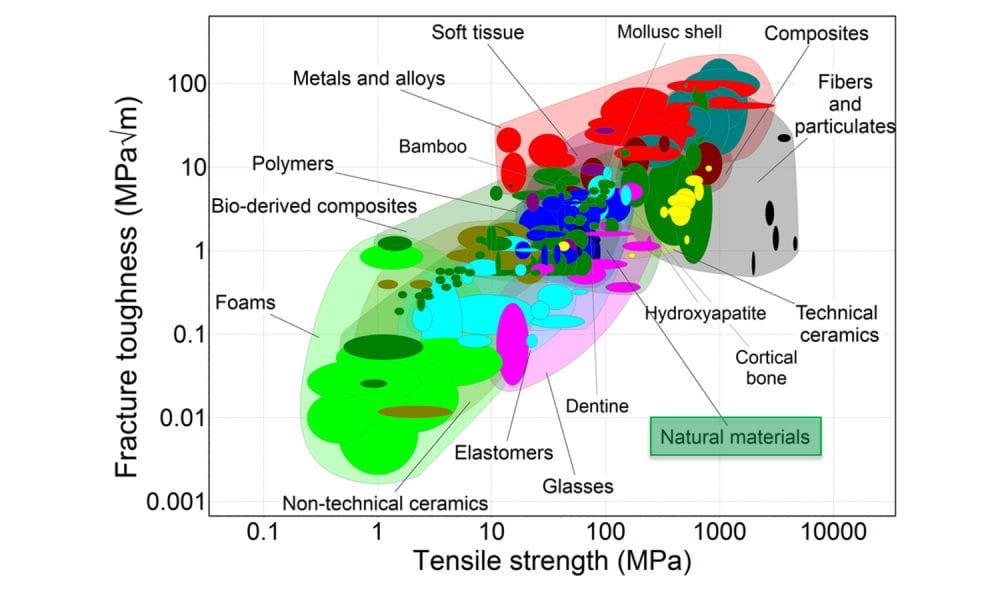
Ashby plot showing fracture toughness − strength relationships for various engineering materials, demonstrating the excellent combinations that can be achieved by composites and natural materials.
In structural design there is a crucial need for damage tolerant materials, providing a good strength-toughness balance. However, in many engineering materials these two properties are mutually exclusive. In the quest for damage-tolerant materials, which combine toughness and strength, drawing inspiration from nature can be a promising strategy. In nature, indeed, the strength-toughness conflict has been solved through a combination of mechanisms, resulting from a long evolution and a continuous adaptation.
Mimicking the features of natural materials to deliver advanced solutions is non-trivial and few scientists have successfully done it. The recent technological advances in nanotechnology and the rapid growth of additive manufacturing has boosted the research in biomimetics, providing new routes to implement natural features in de novo bioinspired materials.
In this Review, Markus J. Buehler and Flavia Libonati from MIT provide an outline of some representative biological composites, such as bone, teeth, and nacre, along with a description of their structure, chemistry and mechanics, and a detailed analysis of the fundamental design motifs of natural materials, that can be translated into the design of de novo bioinspired composites. Finally, the authors present recent advancement in the fabrication of biomimetic composites, mainly inspired by biomineralized tissues, followed by a critical discussion of topical and successful case studies.
Biomimetics represents a very attractive approach for the design and fabrication of advanced materials, with the potential of improving quality of life and decreasing the environmental footprint. Despite large advances in materials and manufacturing, there are still many challenges that need to be addressed. In the future, further advancement in nanoscale material manufacturing may provide new routes to be able to mimic the hierarchical fashion in de novo materials.

















